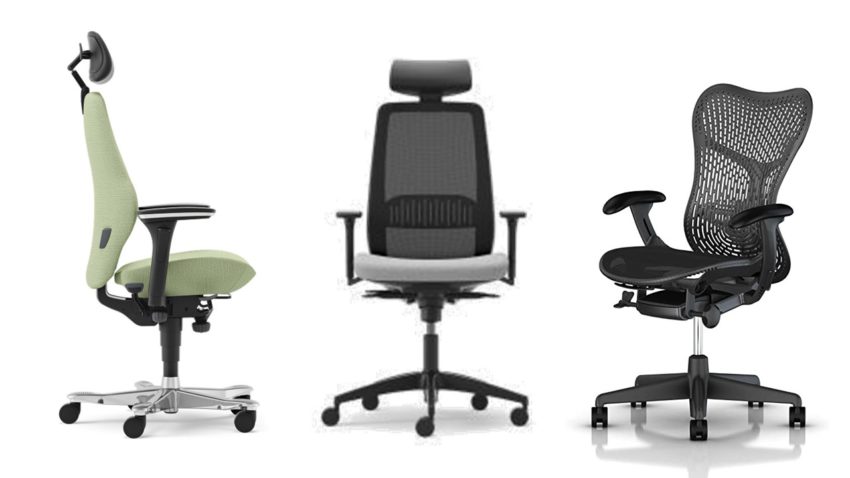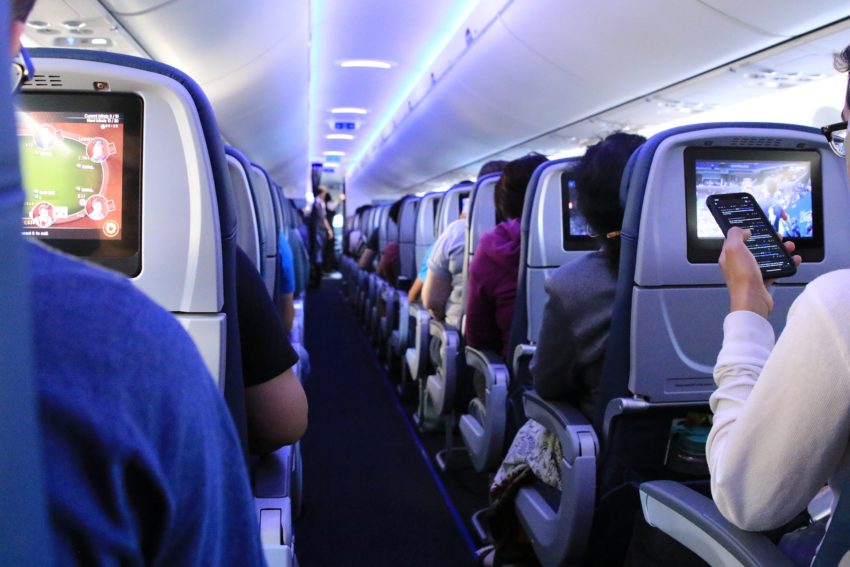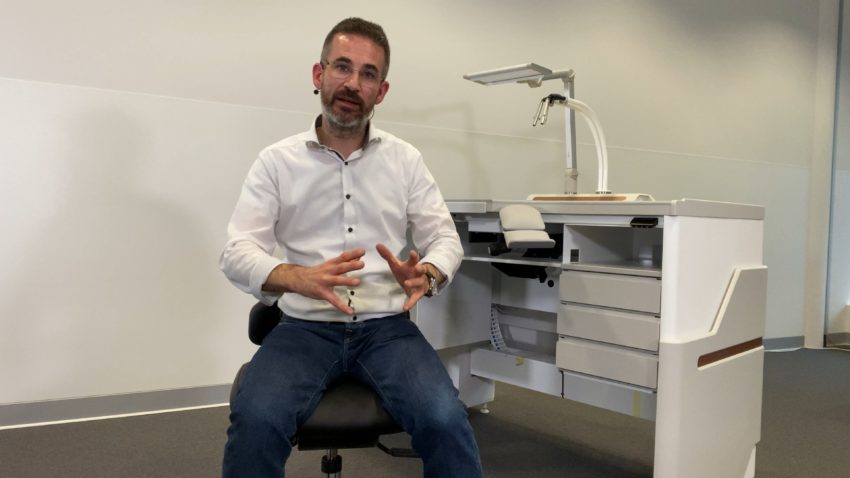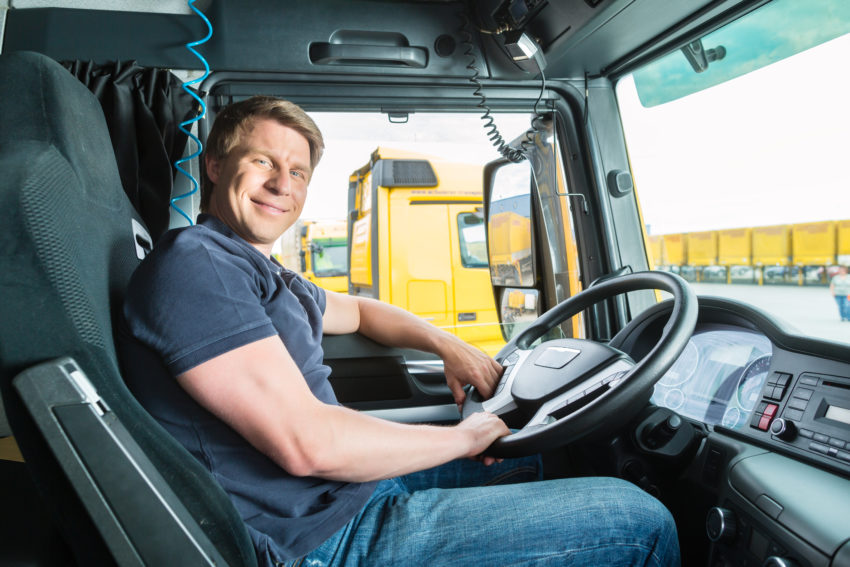Ergonomic workstation design
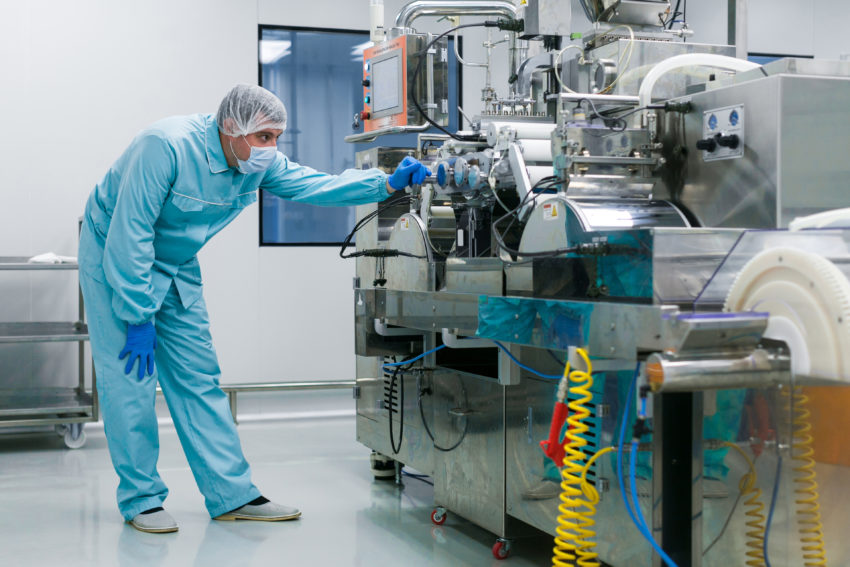
Engineers and designer are key actors of the prevention of MSDs (musculoskeletal disorders), which are so costly to companies!
Here is a summary of our training for machine and equipment designers, and below a mini video course on the basics of ergonomic design by Olivier Girard. This course is also available as a webinar (4 periods of 40 min).
Ergonomic hazards
To prevent musculoskeletal pain, 4 risk factors must be controlled: posture, activity, duration (or frequency) and stress.
Your role as an engineer is to prevent that among the first 3, at least 2 cohabit:
- no bad posture for a long time,
- no carrying of loads at high frequency,
- no carrying of loads in poor postures, etc.
The ergonomic design process is illustrated below.
But never work alone on the design of a piece of equipment: the employees know the job and the production constraints better than anyone else, and the HSE specialists will help you determine the health risks.
Ergonomic design process
Below is the process to design a new working zone (industry or else).
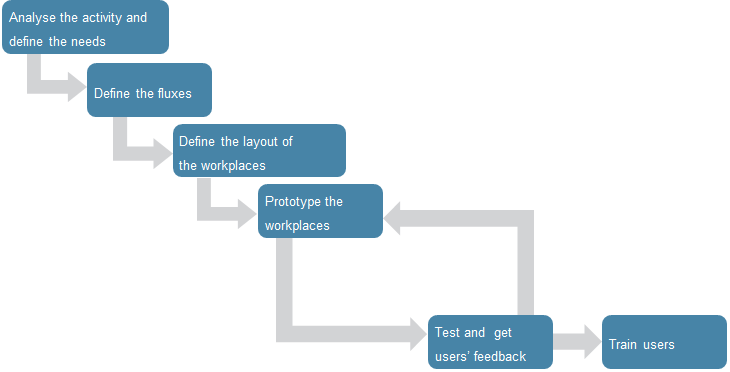
After you defined the needs, the fluxes (include all fluxes e.g., raw material, finished products, waste, employees, visitors, clients / patients, information) and the general layout of the workplaces, it is time to design the workstations. The process is shown below, and detailed in the next paragraphs.
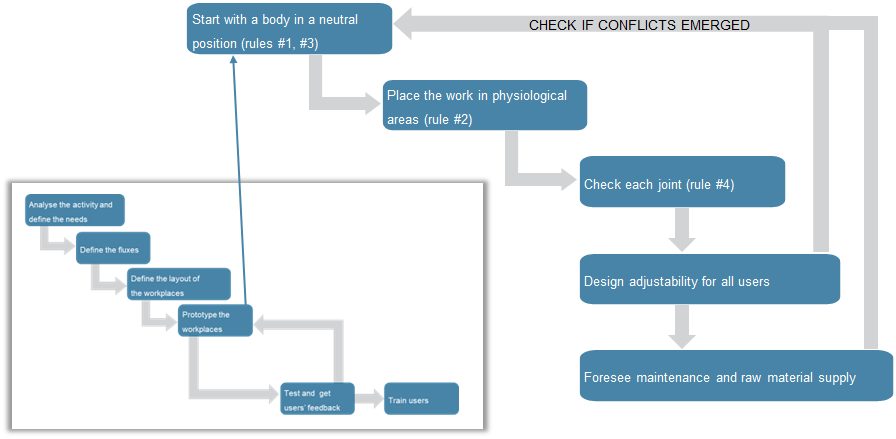
Which working posture?
To choose the best posture at the workplace, two criteria must be analysed: the task to be performed and the organisation of the working day.
Ergonomics aims on the one hand to adapt the posture to the task:
- standing: posture for exerting force (carrying more than 6kg), for handling large parts, for making large movements, or for short cycle times;
- sit-stand: posture for light to medium work (3-6kg), without handling large objects or moving around;
- sitting: for long cycle times (more than 5 min), with little force, for handling small objects, for small movements, or for precision work.
In addition, the employees’ day must take into account their need for postural variation: one should neither stand nor sit all day.
Either employees can switch between workstations with different biomechanical profiles, or each workstation should be adjustable to allow sitting and standing work, if the activity allows it.
The best solution can be found in consultation with the management, which is responsible for the day-to-day organisation of the work.
Which support for posture?
To stabilise the employee (i.e. reduce the static load on the body), ensure that
- the feet are flat on the ground,
- the heels are right below the knees (especially when sitting: watch out for footrests far in front!),
- the pelvis is supported by a height-adjustable lumbar support (sitting and semi-standing).
Only use footrests or platforms when strictly necessary: use height-adjustable workstations so that everyone can work comfortably regardless of their height. The extra cost is minimal compared to the benefits over the depreciation period of the workstation…
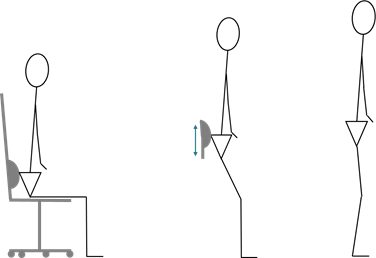
Grip zones and visual field
Then, place the work in the comfort zone for the hands and indicators in the preferred field of view.
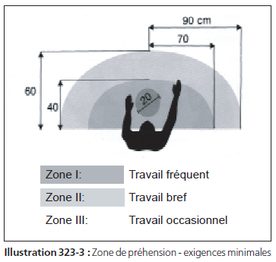
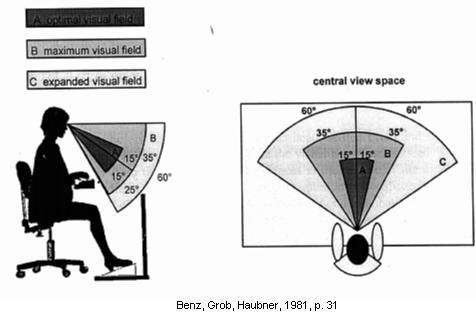
How to protect the joints
Finally, zoom in on each joint to ensure that they are not being used in extreme positions.
Activities involving strength or repetitive movements should be performed around neutral postures, in which the muscles have maximum power.
The area of maximum strength for load bearing is around the pelvis; the weight limits are shown below (decreasing with age and frequency of the task).
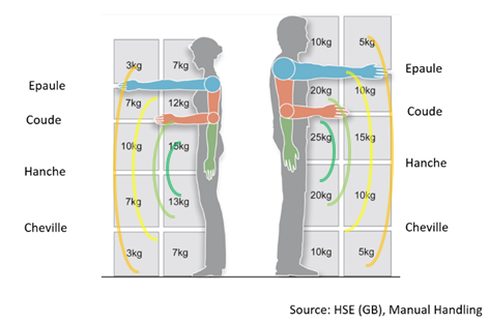
Workers’ participation
Remember that employees know their work better than anyone else: involve them in every phase of the development process, and don’t hesitate to make several mockups.
The best solution is never found on the first try, but the later you try, the more expensive the ergonomics…
To go further
Need an ergonomics engineer?
Ergonomic workstation design
Engineers and designer are key actors of the prevention of MSDs (musculoskeletal disorders), which are so costly to companies! Here is a summary of our training for machine and equipment designers, and below a mini video course on the basics of ergonomic design by Olivier Girard. This course is also available as a webinar (4…

 Français
Français

